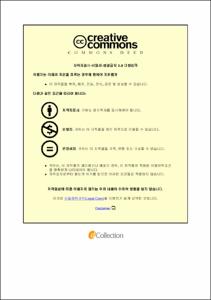한미 FTA 전후 양국 섬유 교역의 패턴 변화 분석
- Alternative Title
- Analysis of Pattern Changes in Textile Trade Due To the KORUS FTA
- Abstract
- At the time of the entry into force of the Korea-US FTA, textiles have been expected to enjoy considerable benefits, including automobiles and their parts, and electric and electronic products, which are the major export items to the US. The textile industry was one of the industries that was classified as a comparative advantage item. When the Korea-US FTA came into effect, it was predicted that Korea's textile industry would become competitive due to the elimination of tariffs and tariff cuts, which would boost exports to the US. It was believed that the Korea-US FTA would bring trade surplus to Korea's textile trade.
However, actual results show different results. Unlike the expectation that it will be the biggest beneficiary of the Korea-US FTA through increased textile exports, Korea's textile exports showed only modest export growth. Therefore, this study aims to analyze the effect of the Korea-US FTA on textile trade in Korea. To analyze the changes in textile trade due to the effect of the Korea-US FTA, I used the data that minimizing the effects of other variables other than the Korea-US FTA. That’s the reason why I used the textile trade data up to 3 years before and after the Korea-US FTA. In addition, I classified the items of textile trade data for understand the trade status of each product.
The analysis shows that there is no change in the textile trade after the Korea-US FTA. There was no statistically significant difference in overall trade volume. However, after the Korea-US FTA came into effect, it was confirmed that the textile items were diversified. Immediately after the FTA took effect, exports increased until 2013, but then dropped again, showing the same level of trade as before. It is confirmed that apparel and fabric are active in textile trade, and the import of yarn has increased after the Korea-US FTA. This seems to be due to the fulfillment of Yarn-Forward Rule, which is the criteria for determining the origin of fibers in the Korea-US FTA.
- Issued Date
- 2018
- Awarded Date
- 2018. 8
- Type
- Dissertation
- Publisher
- 부경대학교
- Affiliation
- 부경대학교 대학원
- Department
- 대학원 국제통상물류학과
- Advisor
- 조찬혁
- Table Of Contents
- 표 목차 ⅲ
그림 목차 ⅳ
Abstract ⅴ
Ⅰ. 서론 1
1. 연구의 배경 1
2. 연구의 목적 5
3. 연구범위와 구성 7
Ⅱ. 이론적 배경과 선행연구 검토 9
1. 원산지 규정 (Rules of Origin) 9
2. 원산지 결정 기준 (Origin Determination Criteria) 16
가. 세번 변경 기준
(Change in Tariff Classification Criterion : CTC) 17
나. 부가가치 기준 (Value Added Criterion) 19
다. 가공 공정 기준 20
라. 보충 기준 21
3. 원산지 결정 기준의 엄격성 22
4. 한미 FTA 섬유 원산지 결정 기준 25
Ⅲ. 우리나라 섬유 산업의 현황 33
1. 섬유산업의 구조 및 현황 33
2. 섬유류 수출입 통계 37
Ⅳ. 실증분석 44
1. 연구 방법 44
2. 실증분석 결과 46
가. 한미 FTA 전후 1년 섬유 교역 독립 표본 t 검정 결과
(동일품목) 46
나. 한미 FTA 전후 3년 섬유 교역 독립 표본 t 검정 결과
(동일 품목) 50
다. 섬유류 품목 분류 결과 53
라. 섬유류 총계 분석 결과 61
마. 추가 분석 결과 – 기준 세율 65
바. 추가 분석 결과 – 양허 유형 69
Ⅴ. 결론 72
1. 실증분석 결과의 요약 72
2. 연구의 시사점 75
3. 연구의 한계점 및 향후 연구방향 77
참고문헌 79
- Degree
- Master
- Appears in Collections:
- 대학원 > 국제통상물류학과-FTA비즈니스전공
- Files in This Item:
-
-
Download
 한미 FTA 전후 양국 섬유 교역의 패턴 변화 분석.pdf
기타 데이터 / 752.7 kB / Adobe PDF
한미 FTA 전후 양국 섬유 교역의 패턴 변화 분석.pdf
기타 데이터 / 752.7 kB / Adobe PDF
-
Items in Repository are protected by copyright, with all rights reserved, unless otherwise indicated.